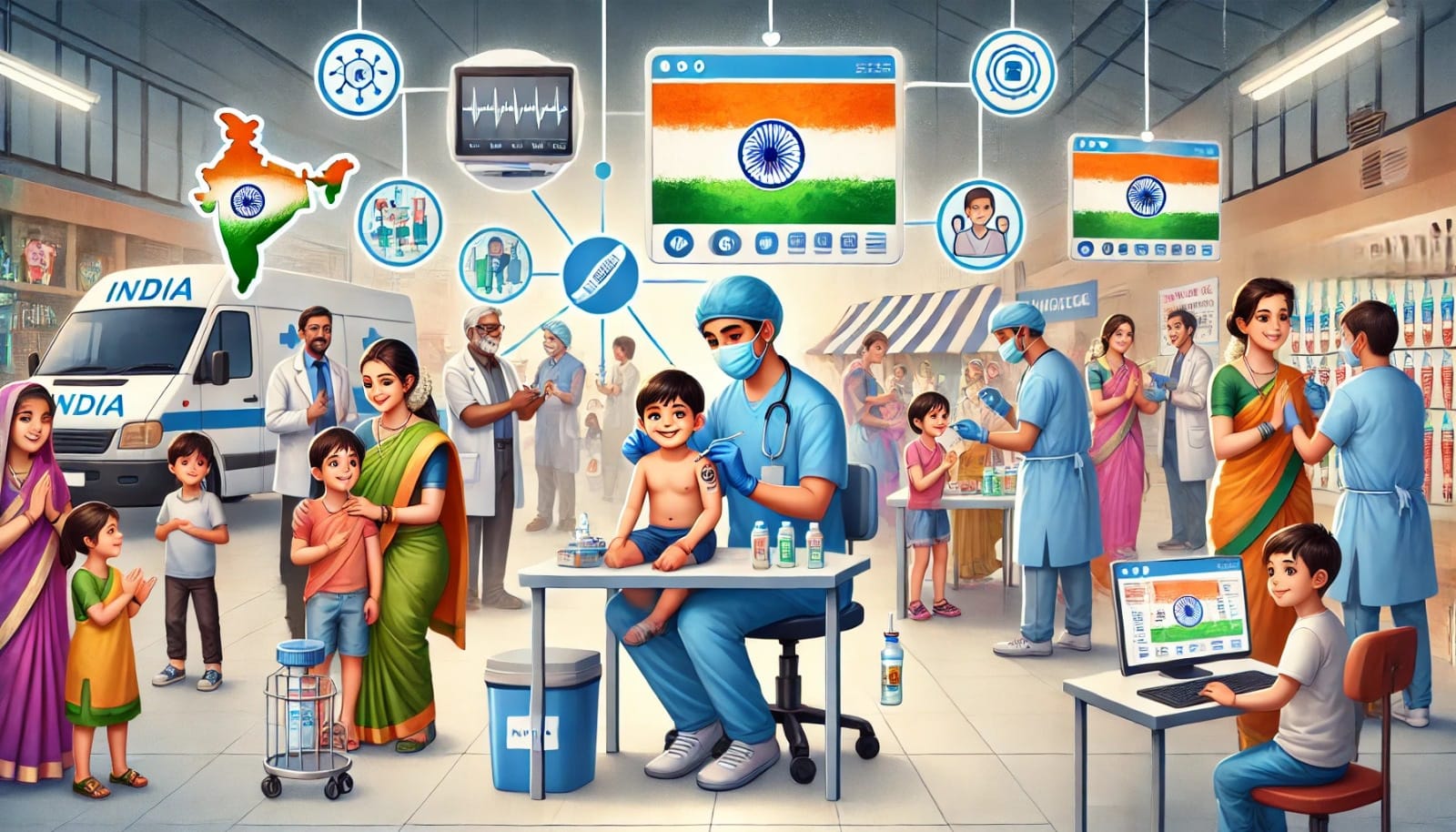Healthcare Without Boundaries: The Smart Vaccination Plan That Reached 18 Lakh Kids
The focus now should be on scaling, sustaining, and refining these efforts so that every child regardless of their socio-economic background gets the protection they deserve.

Access to routine immunisation is an important pillar of public health, yet urban areas have long struggled with gaps in coverage. Unlike rural regions, where community outreach programs have been relatively successful, urban centres face unique challenges like high population density, work constraints, and logistical barriers. Recognising these issues, the government launched a seven-day-a-week vaccination initiative in January 2023, aiming to make immunisation more accessible for urban families.
The results? A dramatic increase in vaccination rates from 72.4% to 95% in just two years. This success story is more than just numbers it’s a testament to strategic planning, commitment, and an unwavering focus on healthcare accessibility.
Historically, urban immunisation coverage has lagged behind rural areas, as revealed in consecutive National Family Health Surveys (NFHS-4 and NFHS-5). While rural immunisation programs often benefit from local healthcare workers visiting homes, urban families particularly daily wage earners face a different challenge: they simply don’t have the flexibility to visit health centres during standard working hours.
Many urban parents, especially those working in informal sectors, struggle to take time off for their child’s vaccinations. The conventional approach of weekday vaccinations proved ineffective for this demographic, leaving thousands of children vulnerable to preventable diseases.
The solution? A round-the-clock, seven-day immunisation model. By ensuring vaccinations were available every day, health centres eliminated the biggest barrier to access i.e. timing.
Under this initiative, urban health centres across the state began offering vaccinations throughout the week, providing greater flexibility for parents. This strategy was designed to:
• Extend immunisation services beyond standard hours to accommodate working parents.• Focus on high-density urban pockets where immunisation gaps were widest.• Use digital tracking to monitor real-time vaccination data and ensure consistent follow-ups.
According to Dr. Ajay Gupta, State Immunisation Officer, approximately 18 lakh children in urban areas received vaccines between January 2023 and February 2025. This outreach not only ensured protection against diseases like measles, polio, and hepatitis but also helped build community trust in government healthcare initiatives.
Why This Approach Worked: The Key Factors Behind Success
1. Accessibility Without Interruptions: One of the primary reasons urban vaccination programs fail is the inconvenience of clinic timings. Many private-sector employees and daily wage workers cannot afford to take leave just for a doctor’s appointment.By running a seven-day-a-week immunisation program, health centres removed this obstacle. Parents could now bring their children on weekends or during non-working hours, ensuring higher participation.
2. Targeting Underserved Communities: The initiative prioritised marginalised urban populations, where immunisation rates were significantly lower due to:
• Misinformation about vaccines.• Financial constraints leading to neglect of preventive healthcare.• Inconsistent availability of healthcare services in high-density slums.By addressing these factors through awareness campaigns and extended service hours, the program successfully reached the most vulnerable communities.
3. Urban health centres were equipped with additional resources to manage the increased footfall. This included:
• Additional staff to handle daily vaccinations.• Better inventory management to prevent vaccine shortages.• Coordination with community healthcare workers to identify and reach out to unvaccinated children.
4. Leveraging Data for Impact: The use of digital tracking and real-time data monitoring ensured that no child missed their vaccination schedule. Health authorities could:• Identify districts with lower immunisation rates and take corrective measures.• Follow up with parents through SMS reminders and community outreach programs.• Ensure vaccine supply remained steady across centres.
Among the districts, Gorakhpur achieved the highest immunisation coverage, setting an example for other urban regions. The district’s approach combined:
• Dedicated immunisation teams that worked closely with local communities.• Mobile vaccination units to cover slum areas and high-risk zones.• Collaboration with local schools and community centres to facilitate mass immunisation drives.The success of Gorakhpur highlights that focused, localised strategies can yield exceptional results in public health initiatives.
The seven-day vaccination model is not just a temporary solution it’s a blueprint for future healthcare initiatives. By prioritising accessibility and community engagement, this approach can be replicated for other essential health services, including:
• Maternal and child healthcare programs.• Routine screenings for chronic diseases like diabetes and hypertension.• Awareness drives for communicable diseases like tuberculosis and hepatitis.
India’s urban population is growing rapidly, and healthcare models must evolve to meet this demand. The success of this immunisation program proves that small, strategic changes can lead to massive improvements in public health.
Despite its success, the program still faces challenges that need to be addressed:
• Sustaining the initiative: Ensuring continuous funding and staffing for a long-term impact.• Expanding to more urban centres: Scaling the model to metropolitan cities with even higher population density.• Combating vaccine hesitancy: Addressing misinformation that prevents some parents from vaccinating their children.
The seven-day-a-week vaccination initiative is more than just an urban immunisation program it’s a testament to what’s possible when healthcare is made truly accessible. By breaking barriers to immunisation, the initiative has set a new benchmark for public health in India.
With vaccination rates soaring from 72.4% to 95%, this program has already transformed thousands of lives. But the journey doesn’t end here. The focus now should be on scaling, sustaining, and refining these efforts so that every child regardless of their socio-economic background gets the protection they deserve.
As healthcare professionals and policymakers look ahead, one question remains: Can this success be expanded to create a nationwide impact? If the past two years are any indication, the answer is a resounding yes.
 Sunny Parayan
Sunny Parayan
#SmartVaccination #HealthcareForAll #NoChildLeftBehind #VaccineAwareness #VaccinateEveryChild #healthvoice
